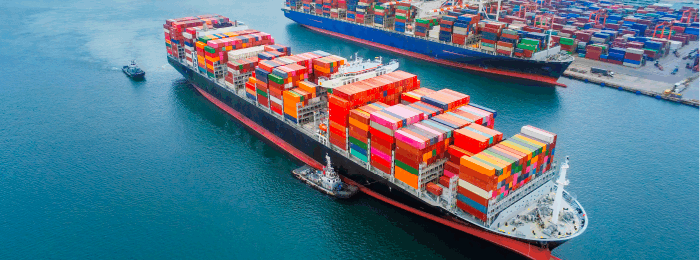
The politically exposed persons (PEPs) issue is a recurrent theme for the compliance community. Let us get straight to the point: In the ever-growing scope of a compliance officer’s duties, the subject comes as often as a pain in the neck.
First, it seems very difficult to rely on an exhaustive, accurate and “official” PEP list. Regulators in France seem reluctant to publish such a list, even though they are ready to accept PEP databases that are provided by external intelligence services.
Second, PEPs are a big deal. They are supposed to be vulnerable to corruption, or at least more vulnerable than most non-PEPs. Once identified, their belongings, assets and wealth must be investigated by all reporting parties1 in search of any trace of corruption. According to the law, any suspicious activity related to PEPs has to be reported to the national authorities in charge.
The Birth of the PEP Concept
The PEP concept stems from Africa (more precisely from the Abacha case).2 At the end of the 90s, Sani Abacha, a Nigerian dictator, diverted public funds, which consisted in part of development aid, for personal gain. He did this with the help of family members and close associates. The total amount at stake is said to have reached billions of dollars and was held in bank accounts in the U.K. and Switzerland.
Shortly after, the subsequent Nigerian government launched an international judicial inquiry in order to recover the funds from several European countries, including Switzerland. Within the frame of a mutual assistance process engaged by Switzerland with more than 60 financial institutions, the concept of PEPs emerged and finally materialized at the occasion of the U.N. Convention against Corruption.3
The U.N. Convention took place in 2003. It mentioned public officials and insisted on the care that should be taken when dealing with individuals who are more prone to be linked to corruption than a standard customer. The convention listed nearly every characteristic that would later define PEPs and be integrated in the Financial Action Task Force (FATF) Recommendations and the subsequent EU directives.
FATF and the EU Directives Take Over
The PEP issue made its entry in the FATF Recommendations in 2003:
“Politically Exposed Persons (PEPs) are individuals who are or have been entrusted with prominent public functions in a foreign country, for example Heads of State or of government, senior politicians, senior government, judicial or military officials, senior executives of state owned corporations [and] important political party officials. Business relationships with family members or close associates of PEPs involve reputational risks similar to those with PEPs themselves. The definition is not intended to cover middle ranking or more junior individuals in the foregoing categories.”4
As far as guidelines are concerned, the FATF is clear:
“Financial institutions should be required, in relation to foreign politically exposed persons (PEPs) (whether as customer or beneficial owner), in addition to performing normal customer due diligence measures, to: (a) have appropriate risk-management systems to determine whether the customer or the beneficial owner is a politically exposed person; (b) obtain senior management approval for establishing (or continuing, for existing customers) such business relationships; (c) take reasonable measures to establish the source of wealth and source of funds; and (d) conduct enhanced ongoing monitoring of the business relationship.”5
In 2005, the Third EU Directive6 echoed the FATF Recommendations from October 2003. It defined the concept and delivered guidelines. The Fourth EU Directive7 enhanced them by adding national PEPs to the existing cohort.
More Work for the Compliance Officer
Fast forward to today, PEPs have created extra work and worries for compliance officers. Once a PEP is detected, a risk approach has to be deployed. Compliance professionals identify and assess the risks associated with PEPs, including a review of the sector the PEP is involved in, the potential use of corporate service providers and trustees and the presence of nominee shareholders, to name a few.8 Specific due diligence processes are required to assess the risk and to collect information on the origin of the funds, the purpose of the operation and the relations to the counterparties. The idea is to gain the entire picture of the individual. However, not all PEPs deserve the same attention. For instance, some require more dedication than others. Definitely, all of them need special treatment.
Corruption is a Plague
Corruption seems to be everywhere and no one is exempt from this plague. According to Transparency International, France ranked 23 out of 176 countries reviewed in 2016 for corruption.9 To grant a corruption index to a country, Transparency International reviews parameters, such as the transparency of the government, press freedom, civil liberties and the presence of independent judicial systems. As far as these criteria are concerned, in 2016, New Zealand and the Nordics were the winners. In France, corruption is perceived to be a problem in the public procurement area and whenever business and politics overlap. The French Penal Code criminalizes active and passive bribery.
A PEP police to deter local corruption?
As far as the French public sector is concerned, a PEP policy certainly helps to deter bribery since reporting parties have to constantly monitor PEPs’ accounts and report any suspicious activity to the authorities in charge. Nevertheless, the due diligence performed by compliance officers on these specific accounts can only be partial and focus exclusively on the account localized in the financial institution for which they work. For instance, the review of a bank account held by a French institution can lead a compliance officer to detect a suspicious amount of money and to report this suspicion to their local financial intelligence unit (FIU).
We know that PEPs very often structure their ill-gotten gains and hide them in offshore jurisdictions that are reluctant to release their financial information. Thus, if the account is maintained in an offshore jurisdiction or in another financial institution, the financial information will remain out of reach within the frame of a routine due diligence.
Furthermore, numerous civil servants can grant procurement contracts if they rely on a power of attorney or the right authorization. They are non-PEPs, so their private accounts are not so closely monitored and they are prone to be corrupted. Therefore, any bribery received by this specific population will not be detected since they do not receive the PEP due diligence treatment.
Finally, the PEP policy has no influence on the French private sector (except when private/public deals are at stake). A 2015 report states that 25 percent of the executive buyers surveyed, who worked in the French private sector, were offered a bribe (mainly from French companies).10 Seventy-four percent of the buyers from the study obviously signed a corporate anti-corruption charter. But, in general, these charters are not binding.
A New French Anti-Corruption Law to Fill the Gap
Today the PEP issue is fully integrated in the know your customer (KYC) policies in France. The policy includes the practice of enhanced due diligence and a regulatory requirement to report any suspicious activity from the PEP to the local FIU. Financial institutions must stop any relationship with a PEP if anything suspicious occurs. The PEP policy covers part of the corruption risk in France, but not all of it. For example, professionals of the private sector and non-PEP civil servants are not covered by the current policy.
The new French anti-corruption law11 and the recommendations12 of the anti-corruption agency might fill the gap since they require private and public companies to develop a risk map and to mitigate the corruption risks they detect. Within the frame of this new law, employees considered as high risk (as far as corruption is concerned) and duly identified as such by their risk departments, could be monitored. Nevertheless, if bribery rests in other financial institutions and in the private accounts of these individuals, their accounts would remain out of reach for compliance officers once again.
Finally, if we consider the genesis of the whole process, starting from the Abacha case, we might raise the point that this process is not adapted to all countries and that what might be a very useful and efficient process in an African political and economic environment—with political leaders deciding who should receive procurement contracts—might turn out as not being so efficient in another framework, where decisions do not lie in the hands of political leaders, but in the hands of their subordinates.
The fight against corruption has a long way to go. The PEP policy will certainly gain prominence in the future, above all, thanks to a growing number of information leaks from offshore jurisdictions and more information sharing between financial institutions. Future leaks will surely sustain the existing PEP policy, but not all local corruption cases can be deterred by the means of the PEP policy as it is today.
Governments might need to audit their existing anti-corruption infrastructure and fill the gaps left by the PEP policy to ensure a real fight against corruption.
- Reporting parties are FATF member states.
- “Information report, by the foreign affairs Committee, on AML (anti money laundering),” http://www.assemblee-nationale.fr/14/rap-info/i1423.asp
- “United Nations Convention Against corruption,” United Nations Office on Drugs and Crime, 2004,
https://www.unodc.org/documents/brussels/UN_Convention_Against_Corruption.pdf - “FATF 40 Recommendations,” FATF, June 20, 2003,
http://www.fatf-gafi.org/media/fatf/documents/recommendations/pdfs/FATF%20Recommendations%202003.pdf - “International Standards on Combating Money Laundering the Financing of Terrorism and Proliferation: The FATF Recommendations,”
FATF, February 2012, http://www.fatf-gafi.org/media/fatf/documents/recommendations/pdfs/FATF_Recommendations.pdf - “Directive 2005/60/EC of the European Parliament and of the Council on the Prevention of the Use of the Financial System
for the Purpose of Money Laundering and Terrorist Financing,” Official Journal of the European Union, October 26, 2005,
http://eur-lex.europa.eu/legal-content/EN/TXT/PDF/?uri=CELEX:32005L0060&from=FR - “Directive 2015/849/EC of the European Parliament and of the Council on the Prevention of the Use of the Financial System
for the Purpose of Money Laundering and Terrorist Financing,” Official Journal of the European Union, May 20, 2015,
http://eur-lex.europa.eu/legal-content/EN/TXT/PDF/?uri=CELEX:32015L0849&from=FR - “The Puppet Masters: How the Corrupt Use Legal Structures to Hide Stolen Assets and What to Do About It,” World Bank and UNODC, 2011,
https://star.worldbank.org/star/sites/star/files/puppetmastersv1.pdf - “Corruption Perception Index,” Transparency International, Retrieved on January 6, 2018, https://www.transparency.org/country/FRA
- “Priorities of Procurement Departments in 2015 and the Way Suppliers Will Be Dealt with in 2015,” AgileBuyer and HEC Groupement Achats, 2015,
http://www.agilebuyer.com/memo/presse/Enquete_AgileBuyer-HEC_Tendance_2015_150104_web.pdf - LOI n° 2016-1691 du 9 décembre 2016 relative à la transparence, à la lutte contre la corruption et à la modernisation de la vie économique (in French).
- “Recommandations destinées à aider les personnes morales,” AFA, 2017,
https://www.economie.gouv.fr/files/files/directions_services/afa/2017_-_Recommandations_AFA.pdf










